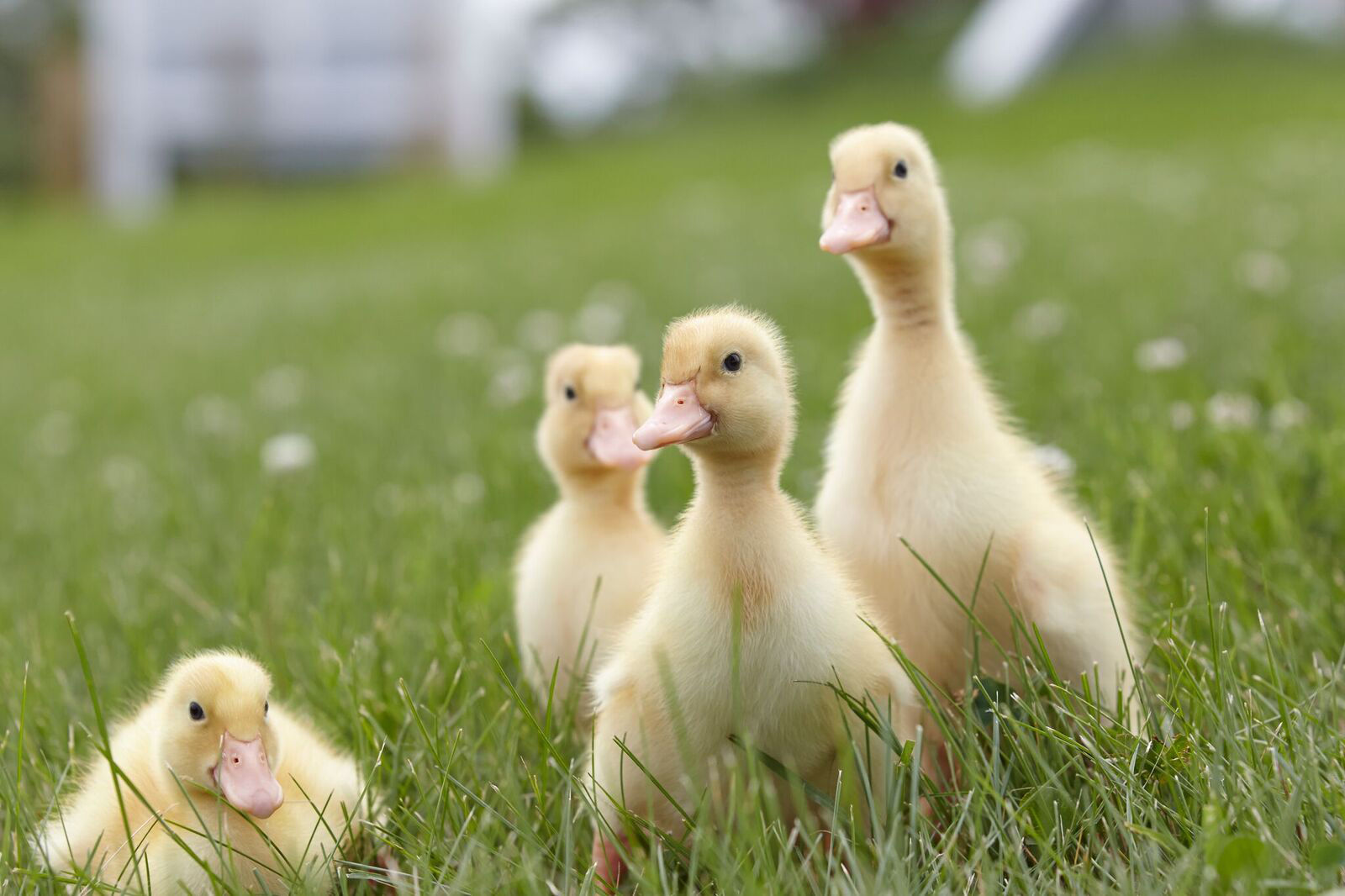Whether you’re looking for a new poultry adventure or just starting a flock, baby ducks and goslings can be a welcome addition to your backyard. Waterfowl such as ducks and geese can be raised separately or along with backyard chickens. Backyard ducks and geese are growing in popularity because they help control insects and weeds and can be wonderful companions. Waterfowl are happiest when they have a grassy area and large pond or pool.
Similar to chickens, waterfowl can lay healthy, nutritious eggs for your family. A duck egg is typically larger than a chicken egg with naturally stronger shells and bigger yolks. Many families also enjoy the rich taste.
If you’re considering raising ducks, geese, or both for your flock, below are a few points to keep in mind.
Let’s start with the basics of raising ducks. A baby duck is called a duckling. A male duck is called a drake and a female duck can be referred to as a duck or hen. Many of the standard rules when raising chickens also apply to ducks – from 4-6 square feet of indoor space and 15 square feet of outdoor space to 16 hours of daylight required to lay eggs.Differences include ducks prefer laying eggs lower to the ground and, of course, they have waterproof-protected feathers. Some flock raisers choose to raise ducks simply for companionship, colorful feathers and antics. Given their friendly personalities, it can be common to find your pet duck waddling after you in the yard. Others raise ducks for eggs and meat; this is known as dual-purpose.
Duck breeds for egg laying are Khaki Campbell, Indian Runner, Ancona, Welsh Harlequin and Magpie.
Duck breeds for meat include Pekin, Ayelsbury and Rouen.
Dual-purpose duck breeds are Muscovy, Cayugas, Orpingtons, Blue Swedish, Saxonys and Crested ducks.
What do ducks eat? Whether you choose to raise waterfowl as pets or for eggs and meat, a complete feed will provide all 38 different nutrients they need to start strong and stay strong. Keep in mind ducklings and goslings should not be fed a medicated starter-grower feed. Medicated starter feeds include amprolium, a coccidiostat which is not approved for use with ducks or geese. For ducklings, one of the most important nutrients is niacin. Ducklings need niacin in their feed as they are not as able to convert it as baby chicks.
Raising geese
If you’re looking for birds with distinct personalities and interesting sounds, geese might be just the right fit. Geese do best in pairs or trios and can often be seen wandering the backyard side-by-side. As compared to other poultry, geese are known for their natural guard dog instincts and can be great flock protectors. Common backyard breeds include the Embden goose, African goose and Chinese goose, all of which can produce high-quality, lean meat. These breeds are excellent converters of nutrients to meat and can reach 20-26 pounds at maturity.
For fancier geese with unique feathering, consider the Sebastopol, Toulouse, or Pomeranian breeds. Although not typically raised for eggs, goose eggs are double the size of duck eggs. They are seasonal layers and start laying in February or March, continuing through early summer. Depending upon breed, geese lay between 20-50 eggs per season.
What do geese eat? The feeding program is very similar to ducks. A complete all-flock feed with 20 percent protein can be fed at all life stages. This high-protein feed is formulated to help meat geese build muscle and reach market weight. Ensure geese always have access to fresh, complete feed and water for the best finishing results. Just like ducks, if you are raising geese for eggs, transition them to a complete layer feed when the first egg arrives around week 24 to 26.
For more information on starting a backyard flock, visit www.purinamills.com/chicken-feed or connect with Purina Poultry on Facebook or Pinterest.



